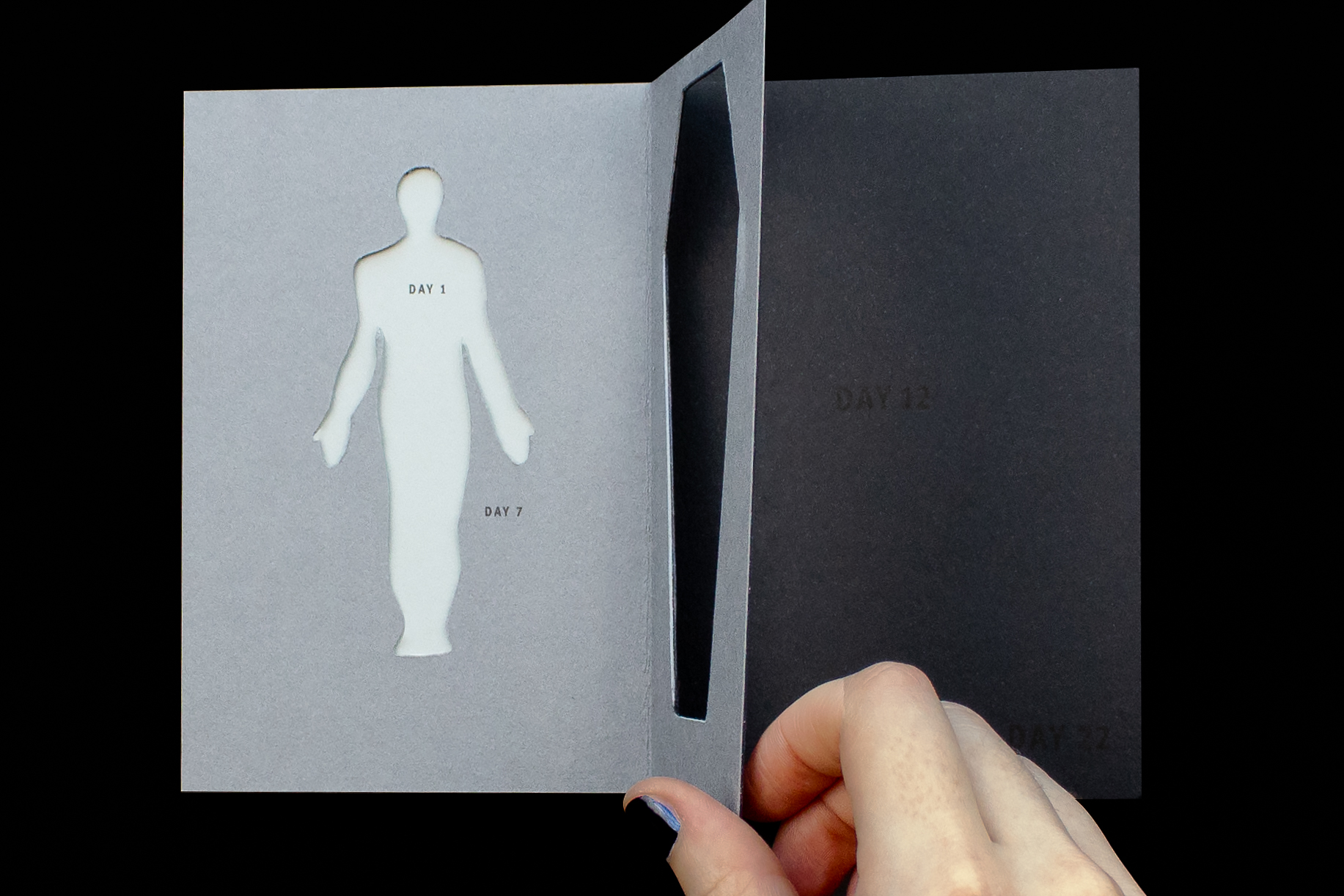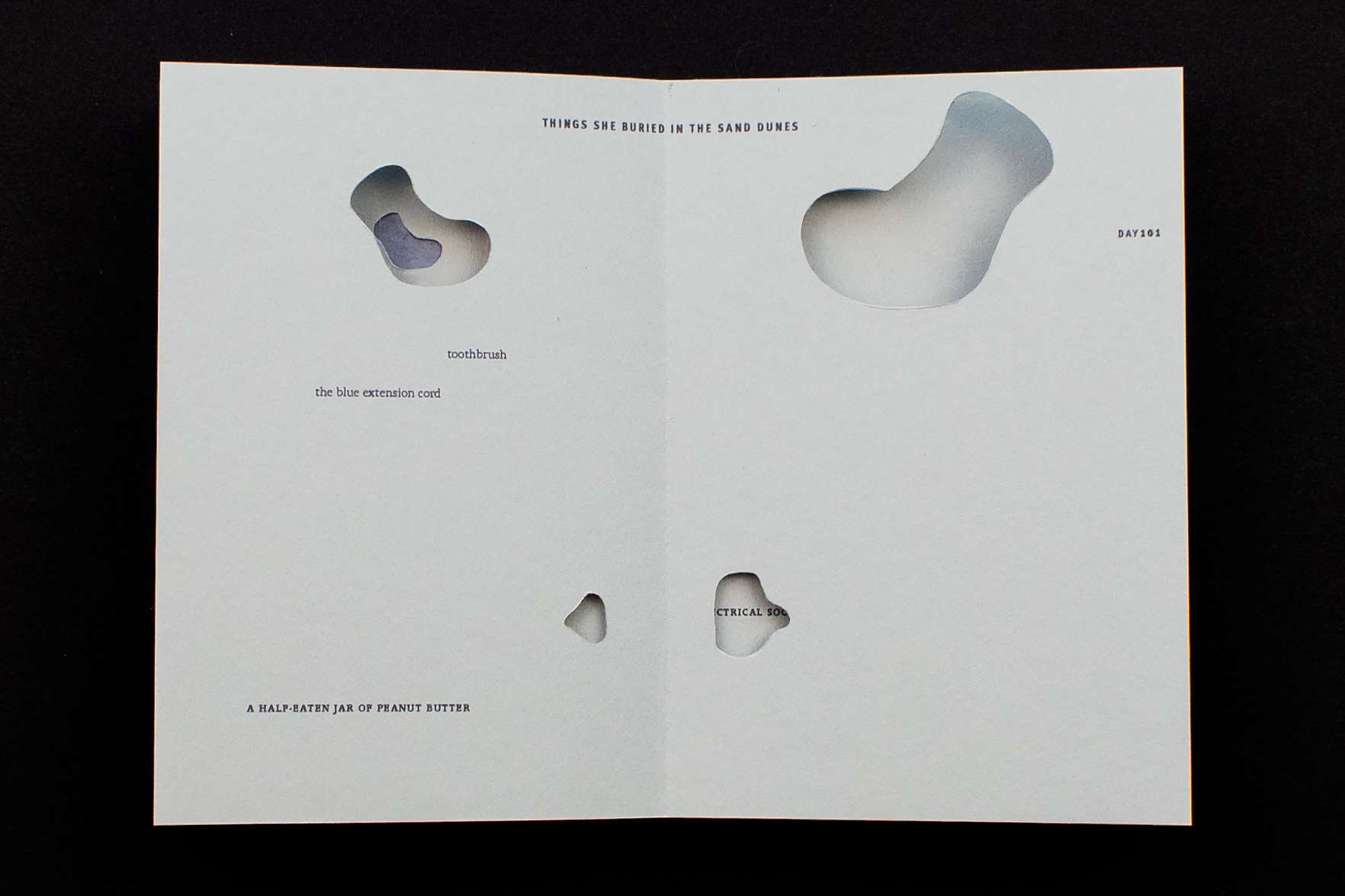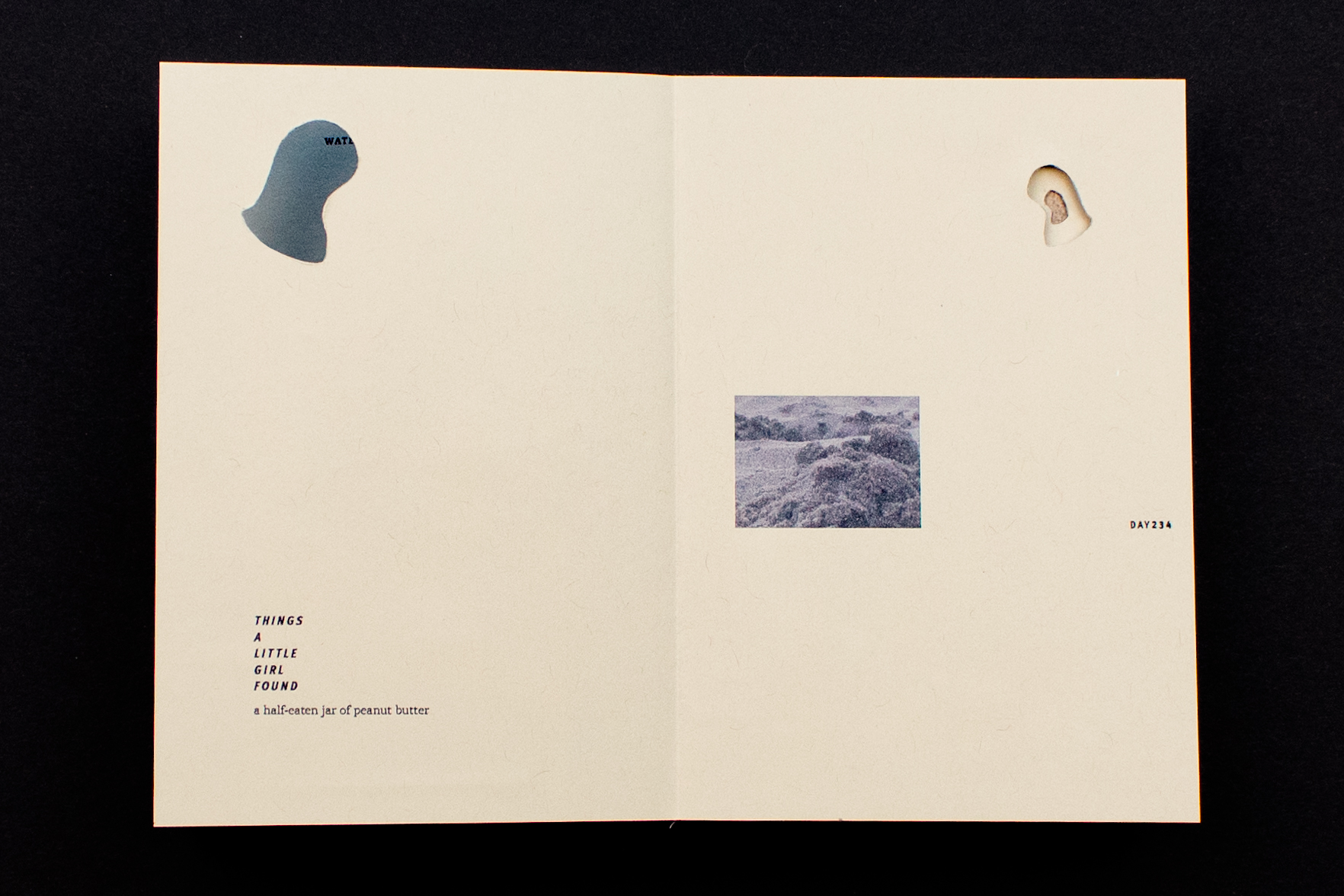A Field Guide to Anxiety
Project Info +−
In The Complete Field Guide to Anxieties of the CTA Loop Stations, I document my anxieties surrounding Chicago's elevated train system, primarily caused by a strong fear of heights.
The first half of the guide contains a photo essay with labeled images that correspond to the Index at the back. In the Index, each anxiety is described and grouped with similar fears. Group 1: Breaks, for example, consists of Platform, Stair and Track Breaks.
The Complete Field Guide is a member of the Joan Flasch Artists' Book Collection.




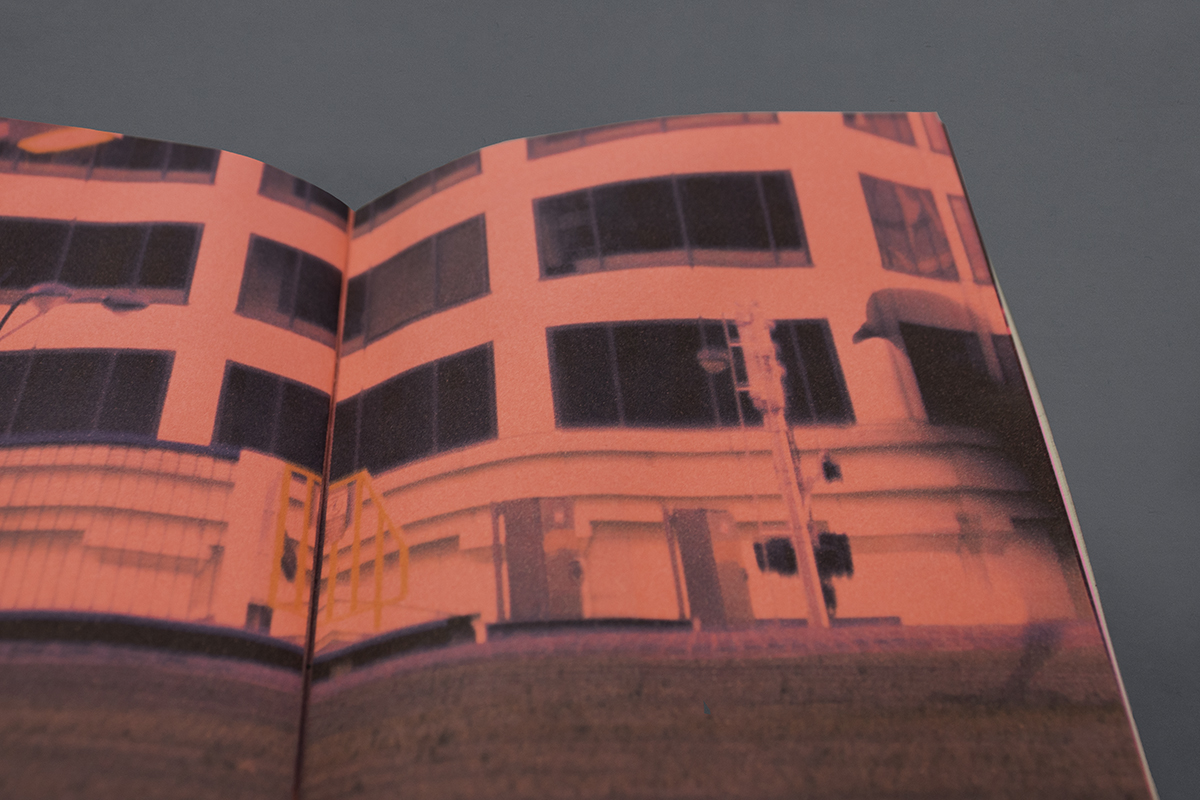
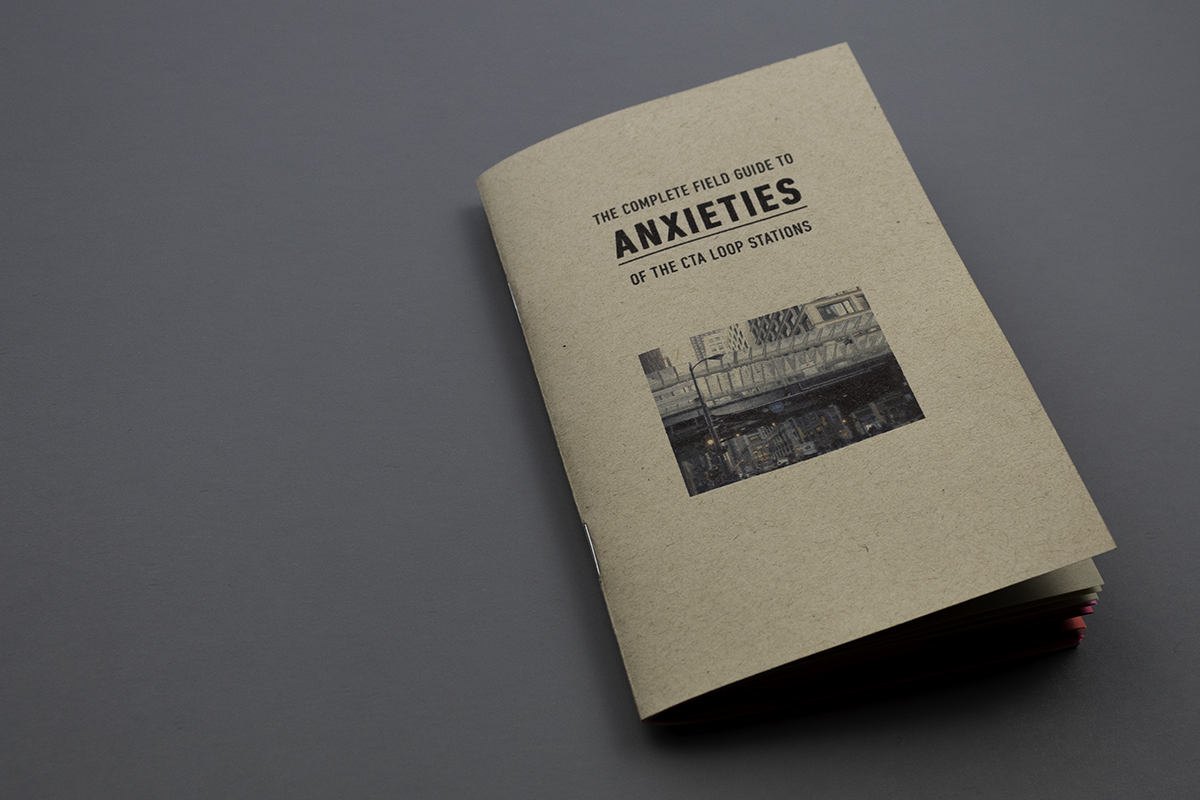
An Apocalyptic Sci-Fi Novel
Project Info +−
When Something Solid Collapses Under Itself is a 129-page, science-fiction novel that I wrote, photographed and designed. In five parts and 112 short stories, the book crafts an absurdist, dystopian narrative. Stories cover topics ranging from the Great American Eclipse to a White House seance to one giant, inflatable pizza.
The book's design uses one grid system and activates it differently depending on the chapter. Parts 2 and 4 build a montage from stories that often read as fragments or digressions. These parts use a shorter line length to drive a faster reading pace, reminiscent of film sequences that juxtapose many different shots over a short period of time.
Parts 1, 3 and 5 each follow a specific narrative event and use a longer line length to emphasize continuity. The introduction of imagery reinforces the novel's arc and themes.
The book was featured at a 2019 reading hosted by Long Day Press and Maudlin House.
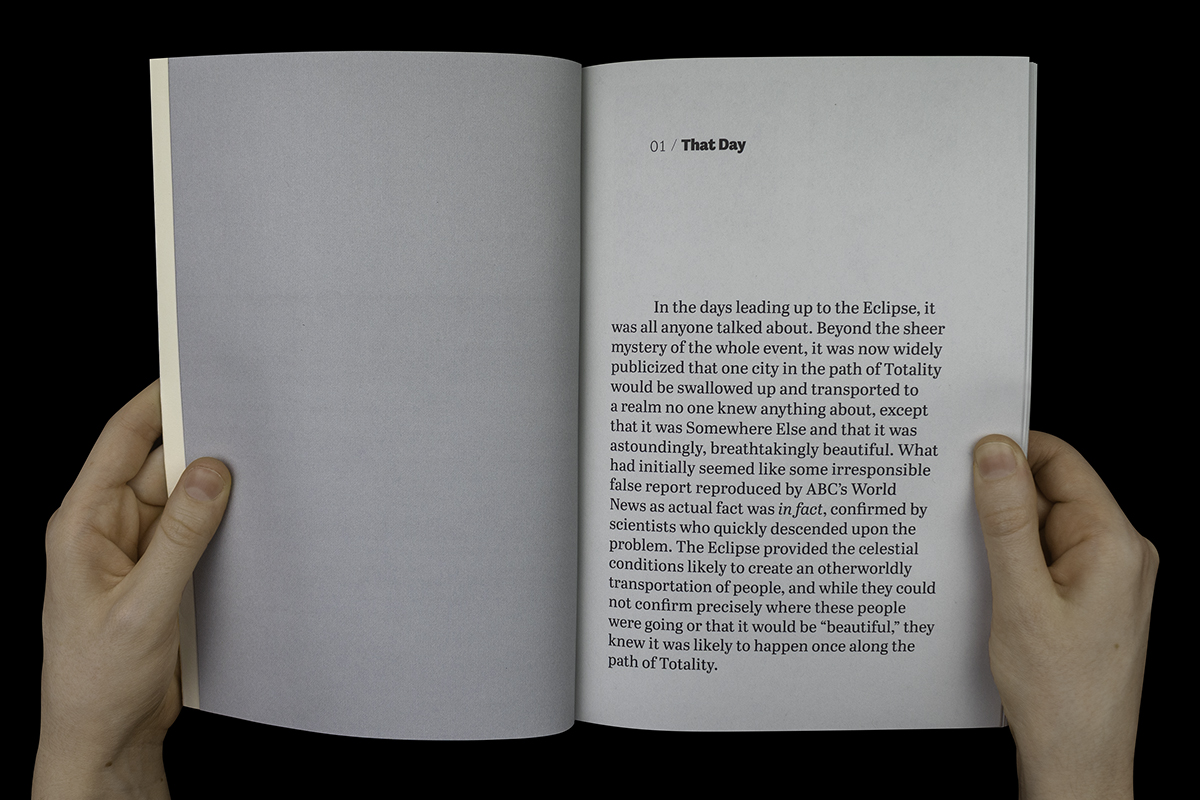



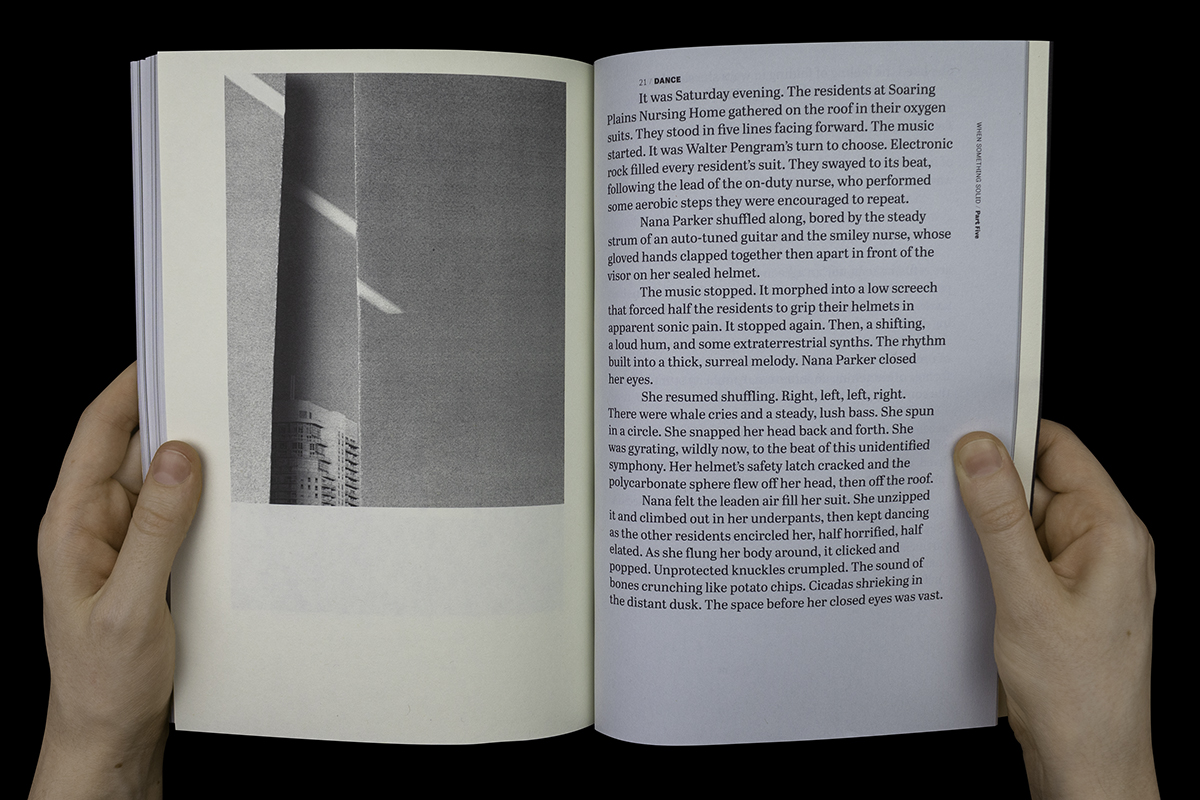
Exhibition Design For A Sci-Fi Novel
Project Info +−
When Something Solid Collapses Under Itself is a dystopian novel that I wrote, photographed and designed. The book was exhibited at School of the Art Institute of Chicago's 2019 MFA Show.
One of the novel's primary visual themes are folds, which capture the bending, compression and ultimate collapse of the book's dystopian world. The exhibition thus uses its corner space to fold one of the book's images across the two walls.
The large photographs, installed on plywood using wheat paste, draw viewers in from a distance. Rearrangeable stools are provided for exploring the book up close. Colors and textures capture the visual language of the book's design.
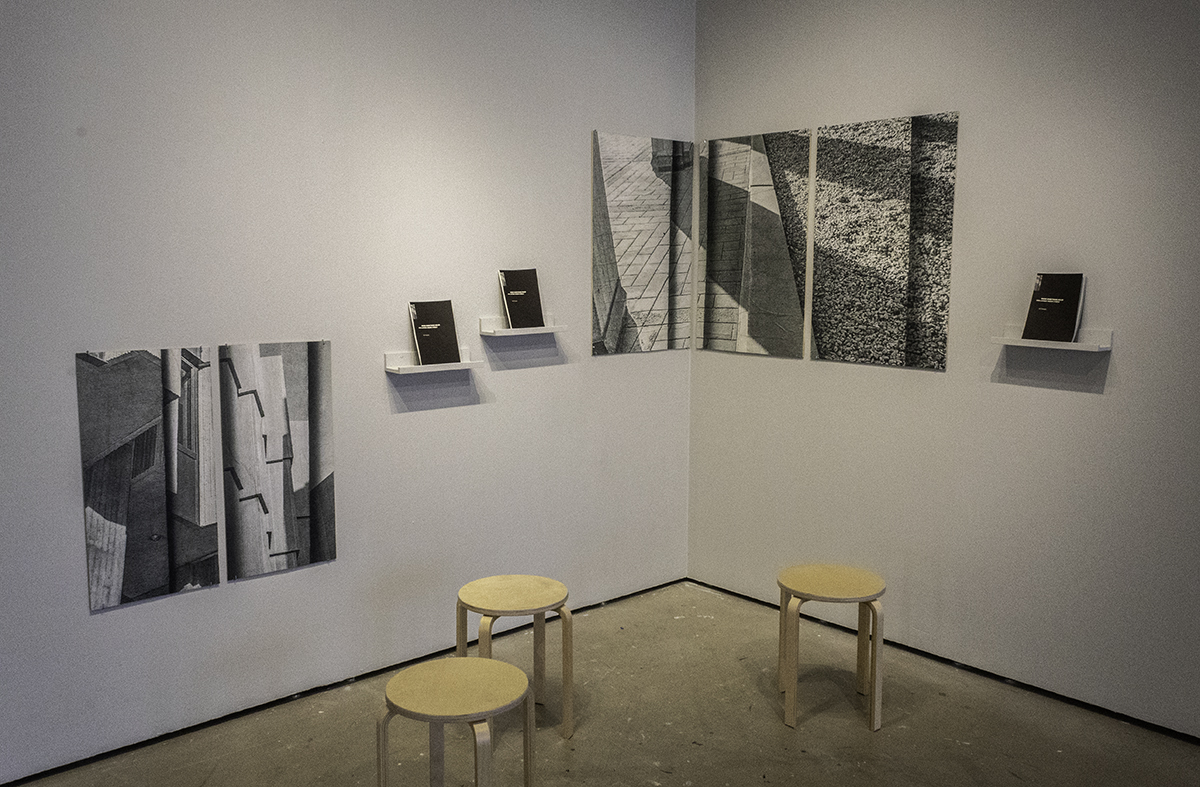

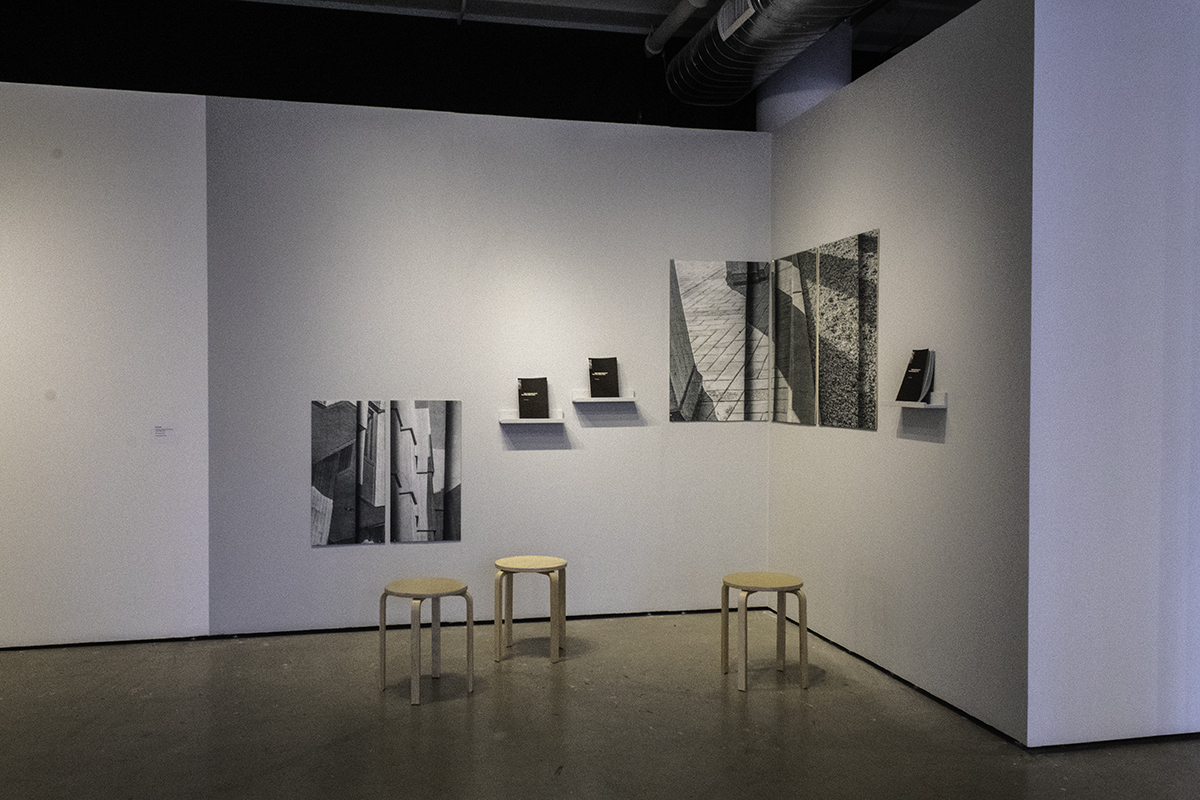
The Pritzker Architecture Prize Website
Project Info +−
At Liska + Associates, I designed updates for The Pritzker Architecture Prize website.
Every year, the site attracts an international audience for the laureate announcement. It also serves as an archive for previous Prize winners.
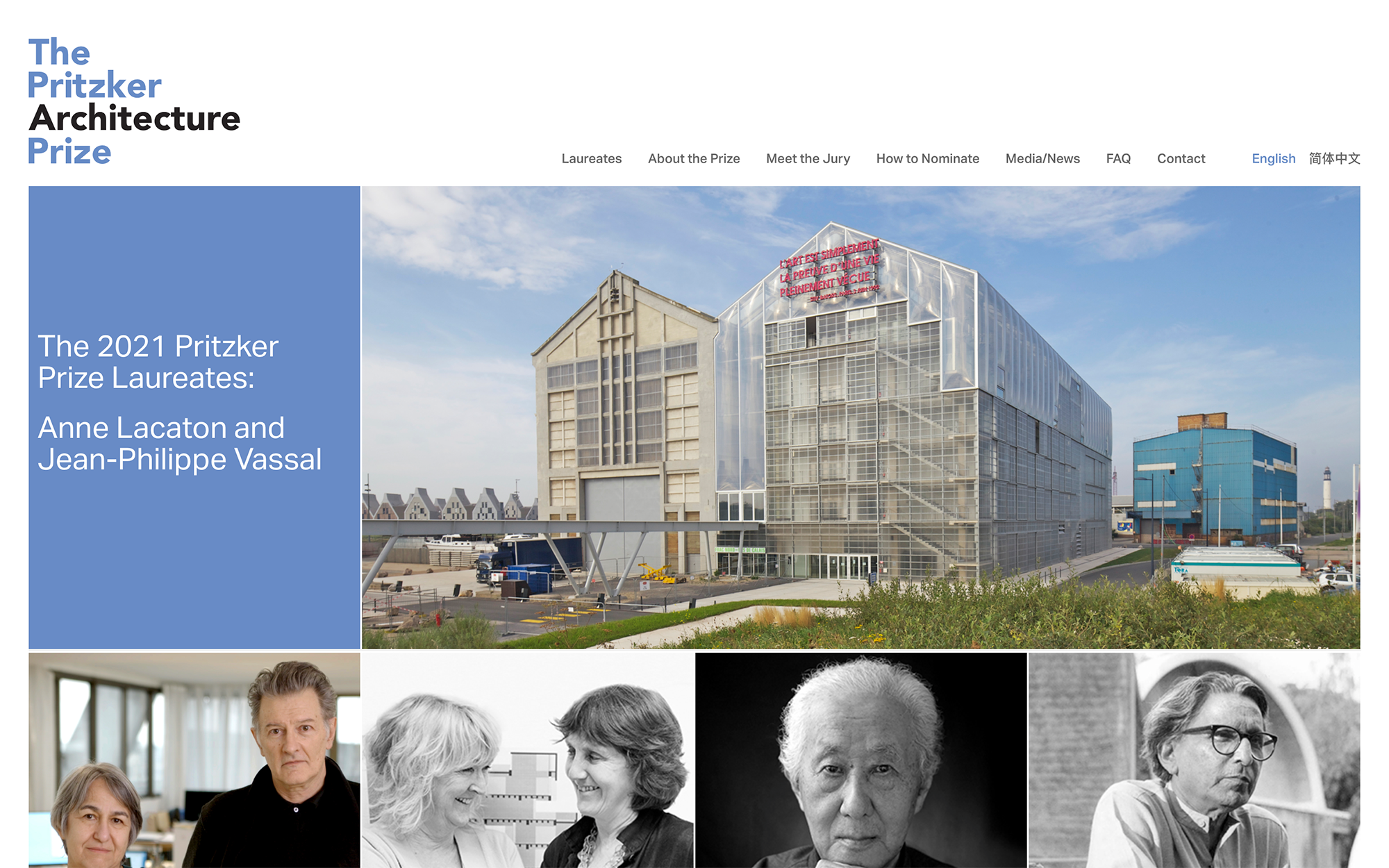
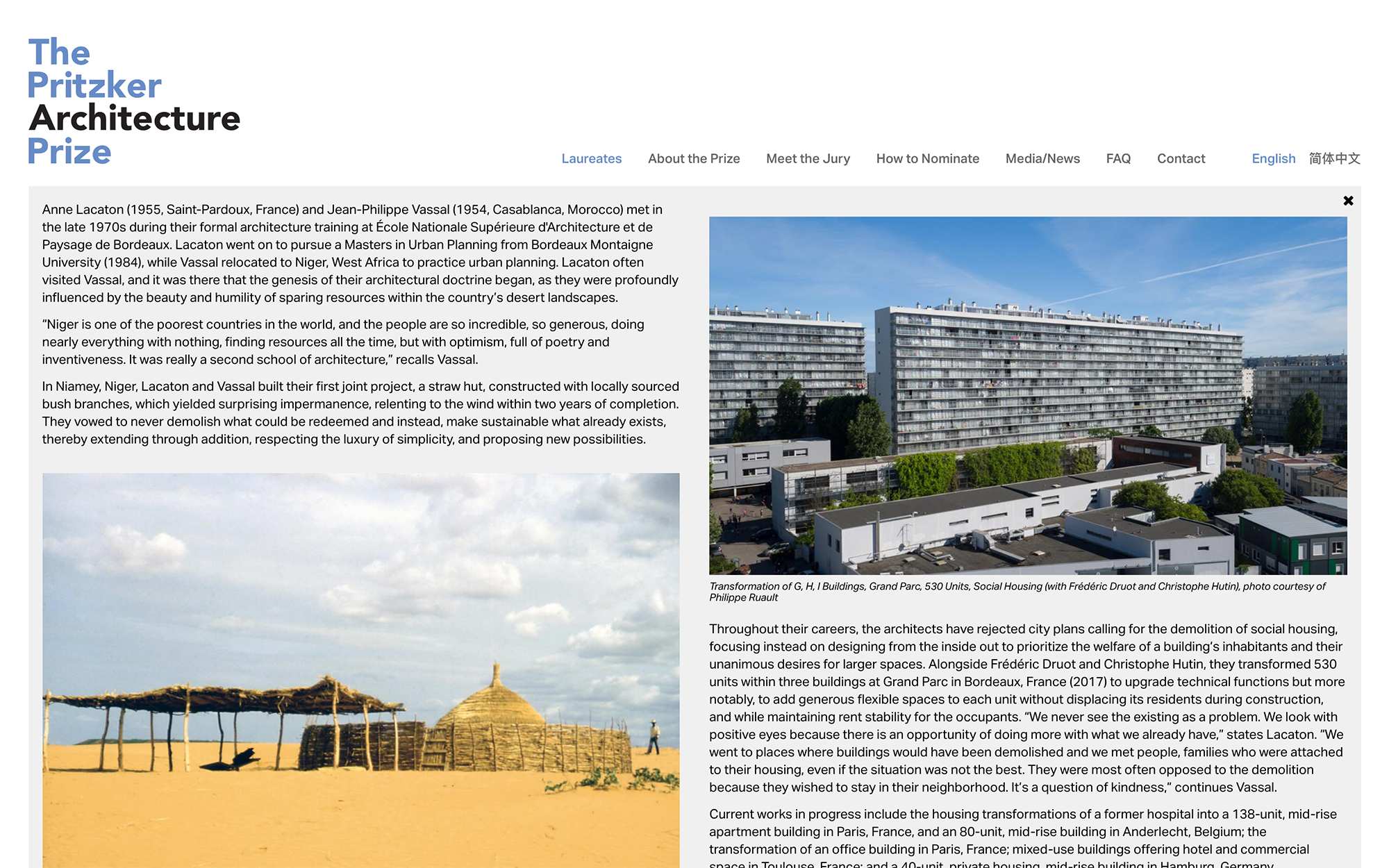

An Absurd Graduation Poster
Project Info +−
The More More More You Know Know Know is a fictional event for college graduates: a last-minute, crash course covering “Everything You Didn't Learn and More More More.”
The event, and this poster, reflect upon what students expect to learn in higher education, especially considering the rising cost of tuition and the explosion of readily available knowledge on the Internet.

Dream Books
Project Info +−
Dream Books is a collection of four artist books that explore the characteristics of dreams.
This project began with dream research. I investigated questions such as: What is the connection between dreams and reality, and how do our brains behave during dreaming?
I then incorporated research into a card-based writing experiment. Each card contained a constraint for writing a short story. Constraints reflected the properties of dreaming. For example, our dreams often sample and repeat content from our daily lives. Thus, one card collected content from my Spotify account: “Write down the title of the last eight songs you listened to. Each title must be repeated twice in the story.”
The writing experiment produced 10 short stories that I designed into book form.
Smaller books, sewn into the larger ones, serve as interruptions in the main sequence. This strategy captures the arbitrary nature of dream narratives, specifically how they transition fluidly between unrelated scenes.
Smaller books also build a multichannel experience where readers encounter two stories simultaneously on a single spread. This experience reflects our frenzied digital lives, grounding the book form in the present moment.
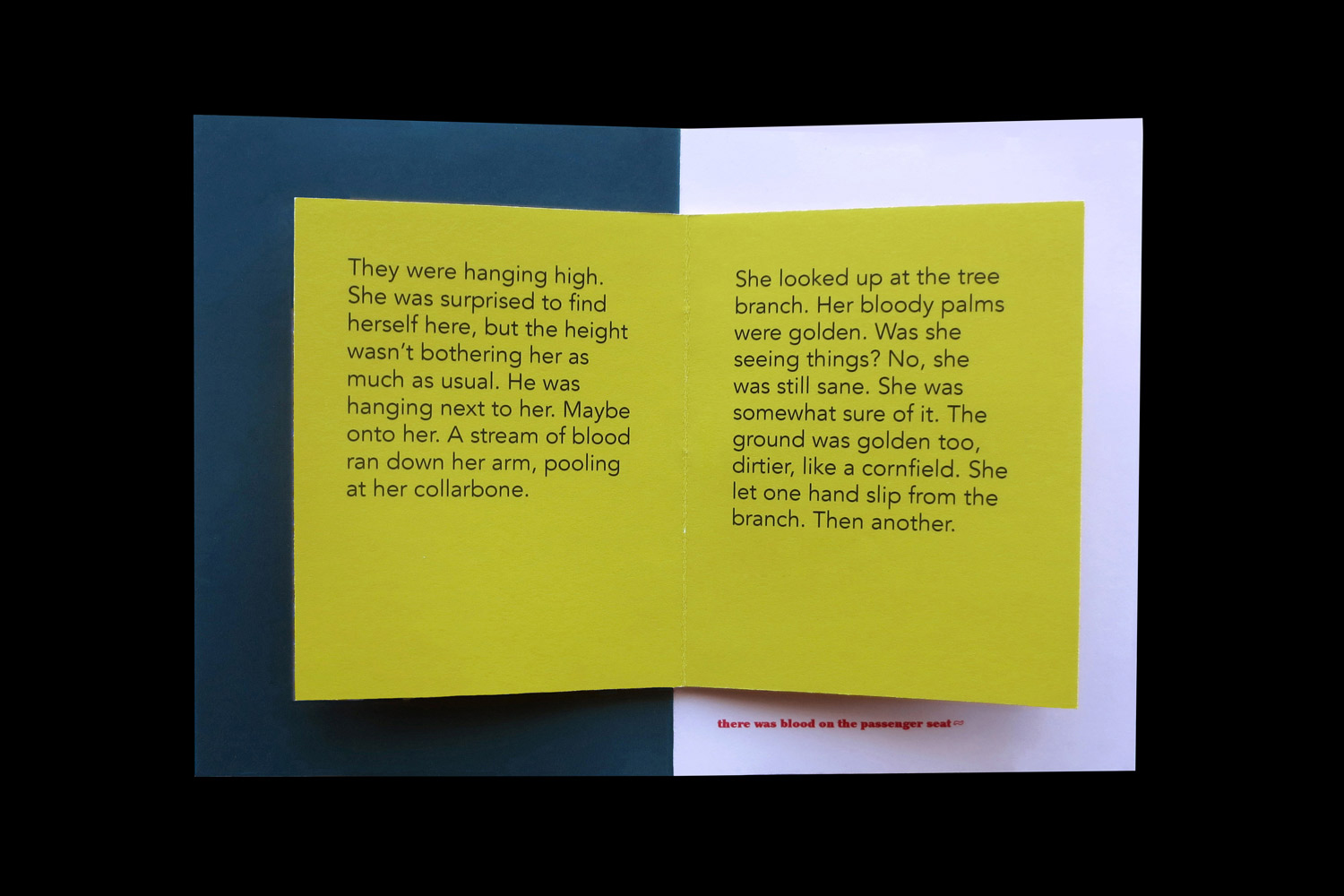

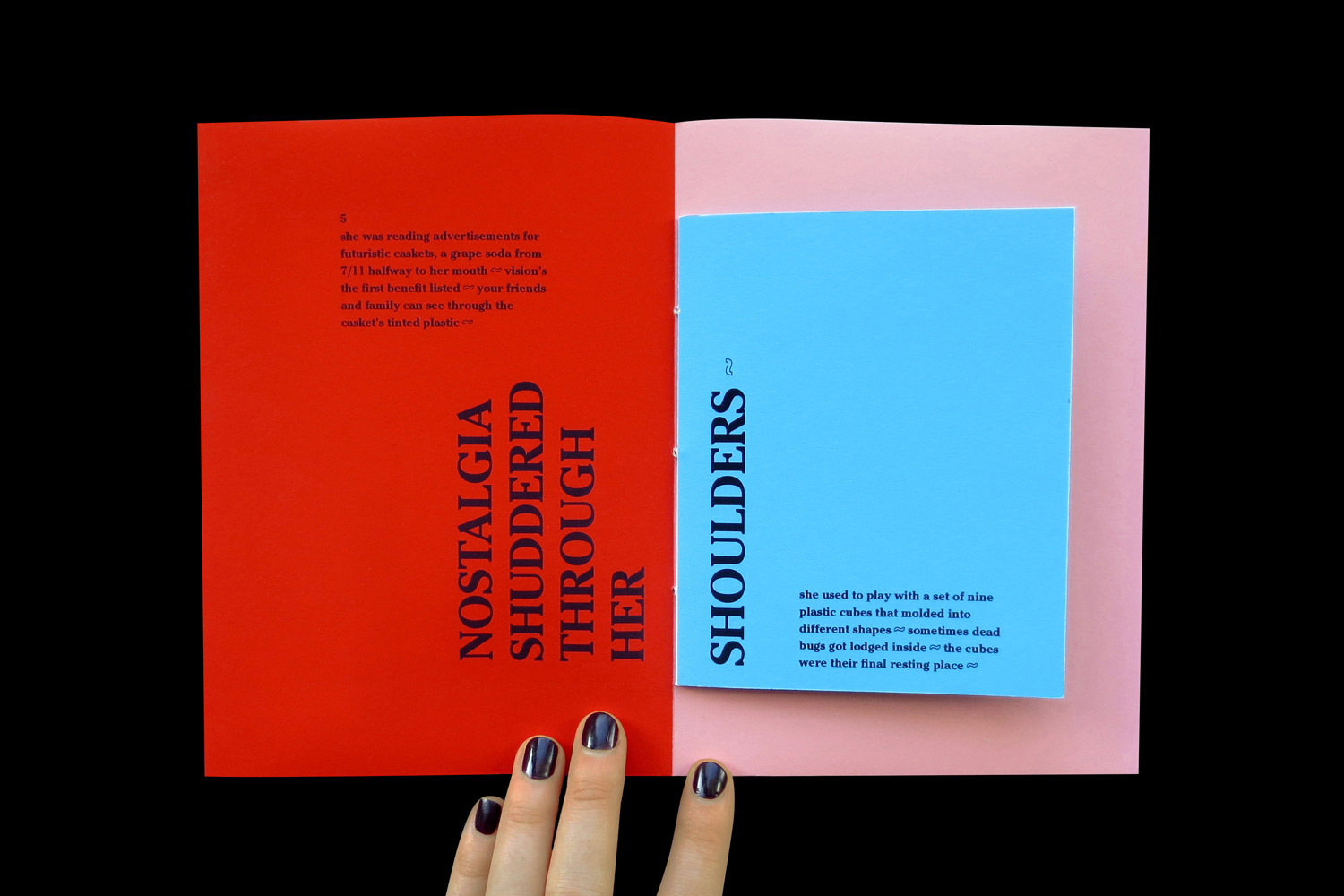
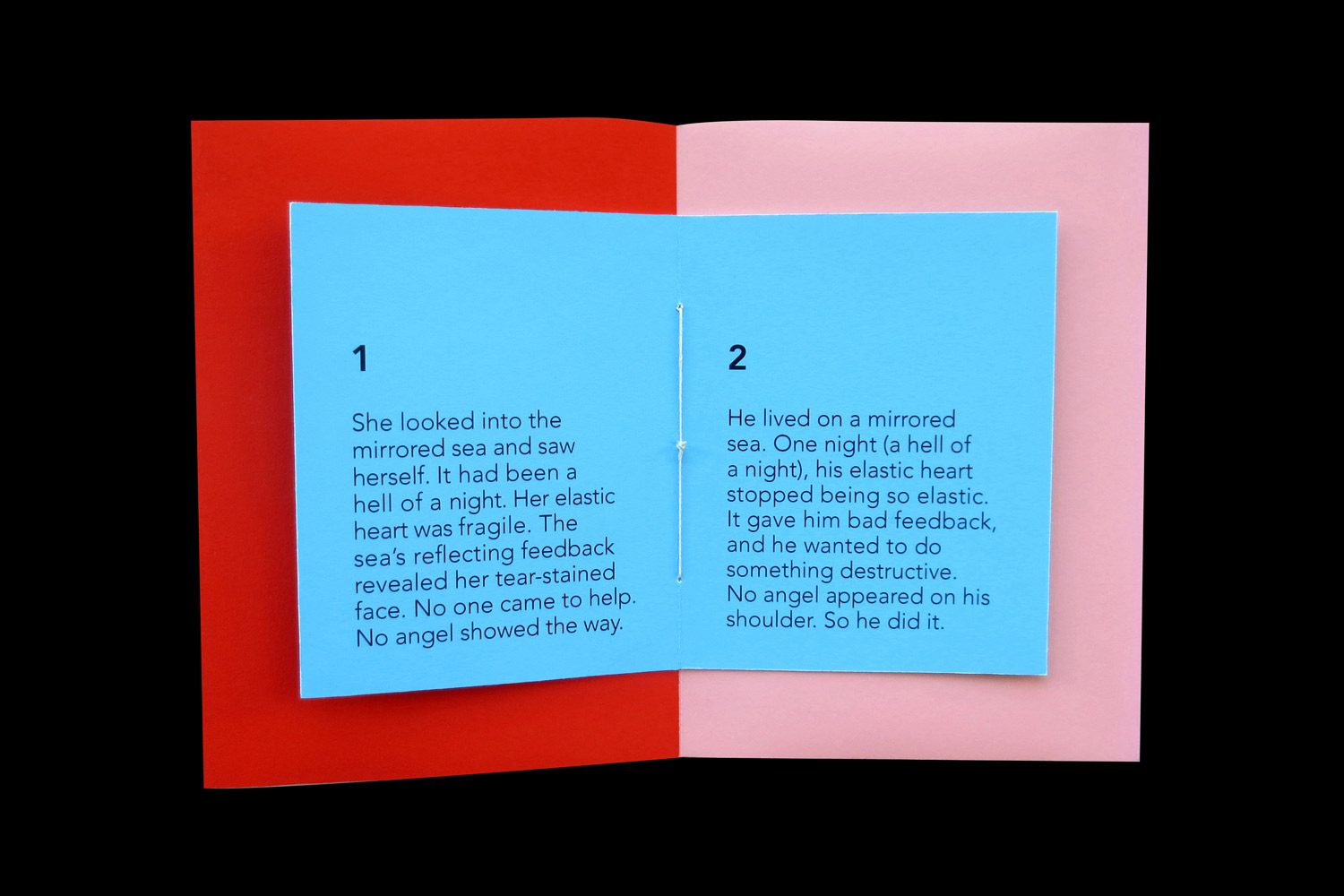

The United Students of Debt
Project Info +−
This booklet compiles research about student loan debt.
Designed to distribute in financial aid offices, the booklet begins with a broad introductory essay that breaks this complex issue into contributing factors including ruthless lending institutions and exploitative for-profit schools.
In Part 2, the booklet narrows its focus to financial aid award letters, which often inflate and misrepresent the amount of aid prospective college students will receive. Aid award letters are one small part of the problem where the booklet argues that better, clearer design can make a positive impact.



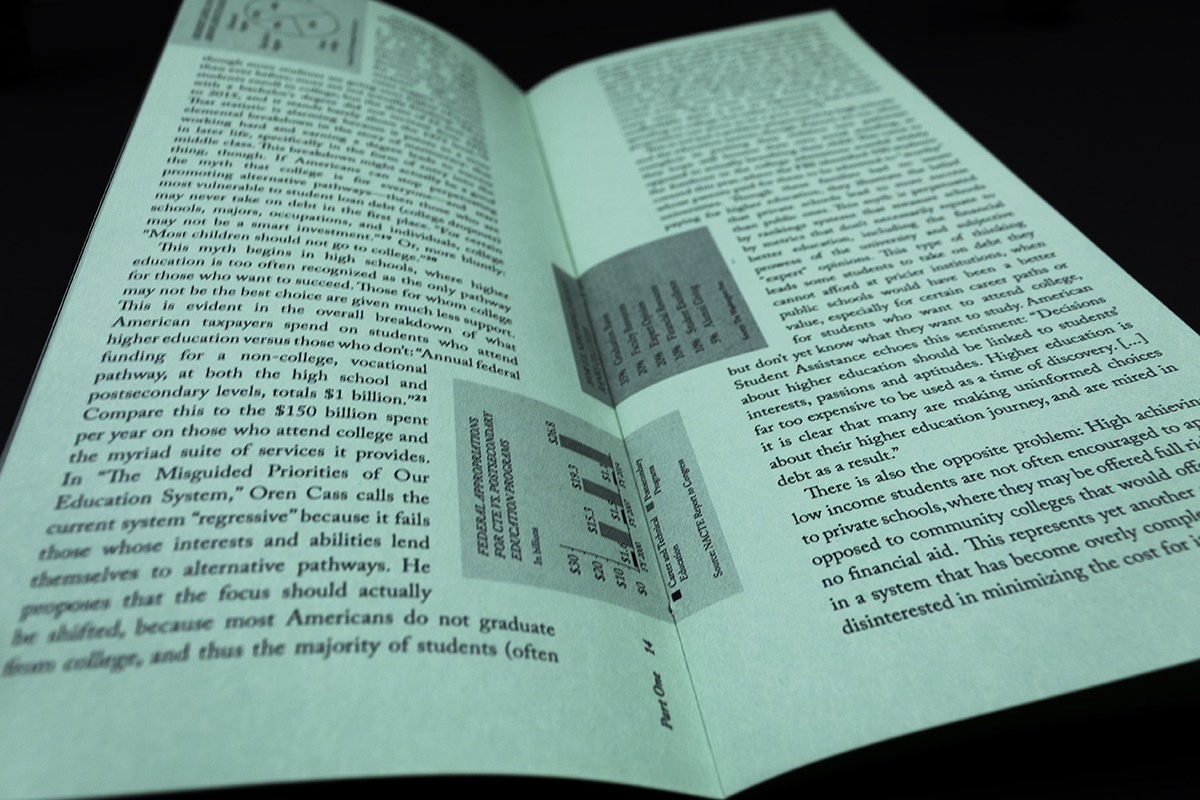

Miscellaneous Identities
Project Info +−
1. Bridges to Brighter Futures is an education initiative for high school graduates that increases access to jobs and skills training. The symbol is both a bridge and a pathway forward.
2. Symbol for an eco-friendly cat litter.
3. Morton Contemporary Gallery, based in Philadelphia, represents a diverse range of fine artwork.
4. Elephant Island Socks is a speculative company that sells playful sock designs from its Coney Island headquarters.
5. Community Desk Chicago is a real-estate initiative that connects community development with funding in Chicago's Black and Latinx neighborhoods. The symbol can be read as a desk or a building.
6. Herbal Curve sells homegrown herbs and shares gardening knowledge.
Identities designed at Liska + Associates, with the exception of #4.
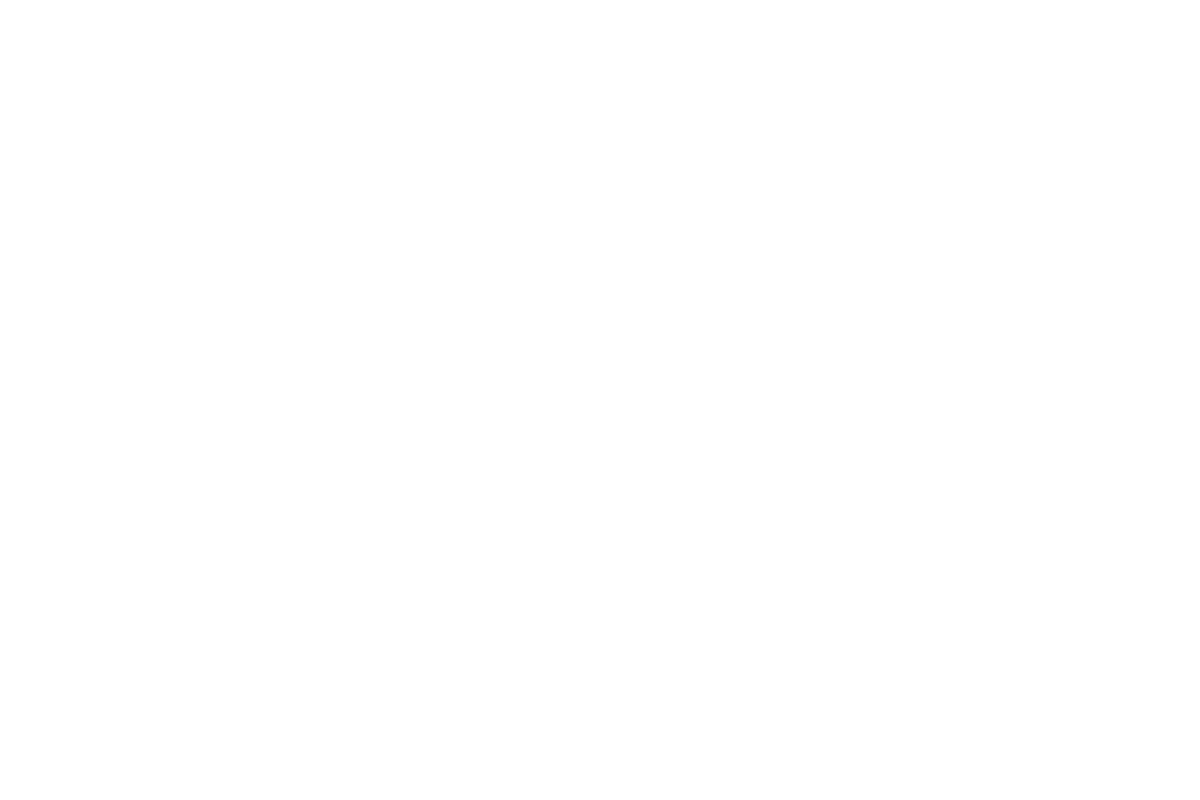
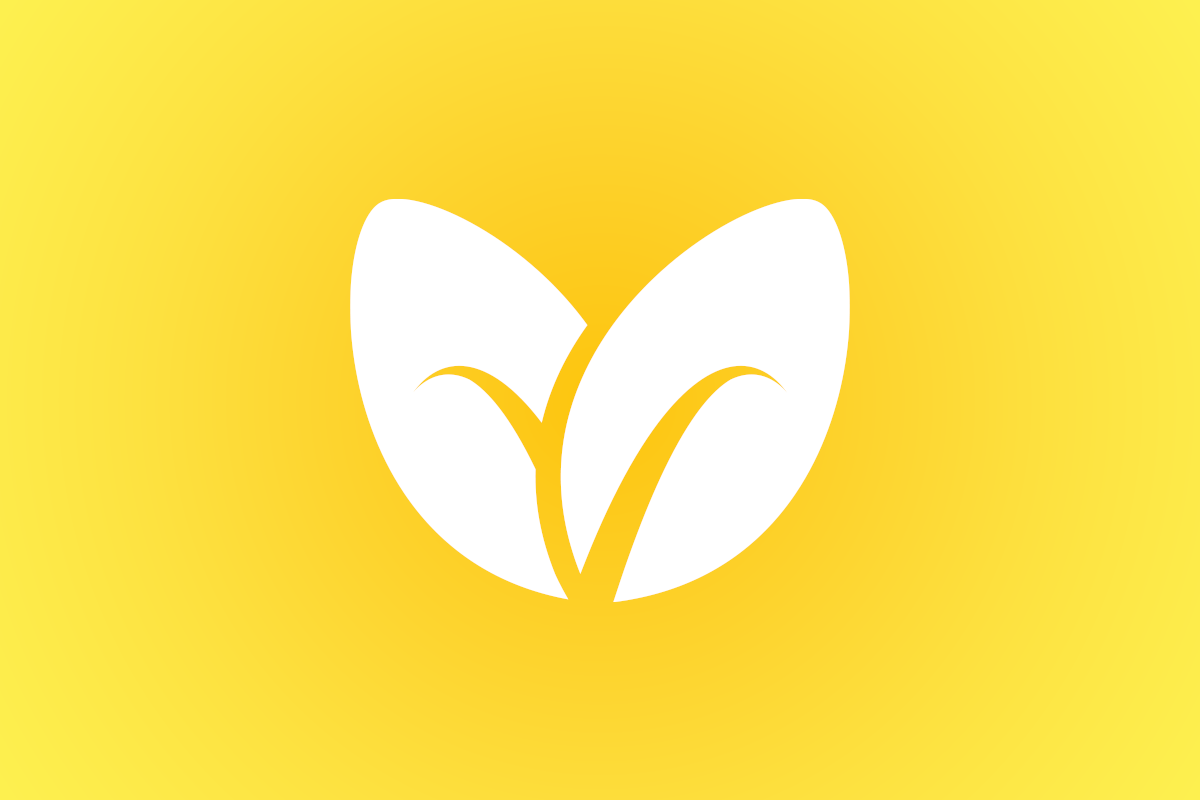
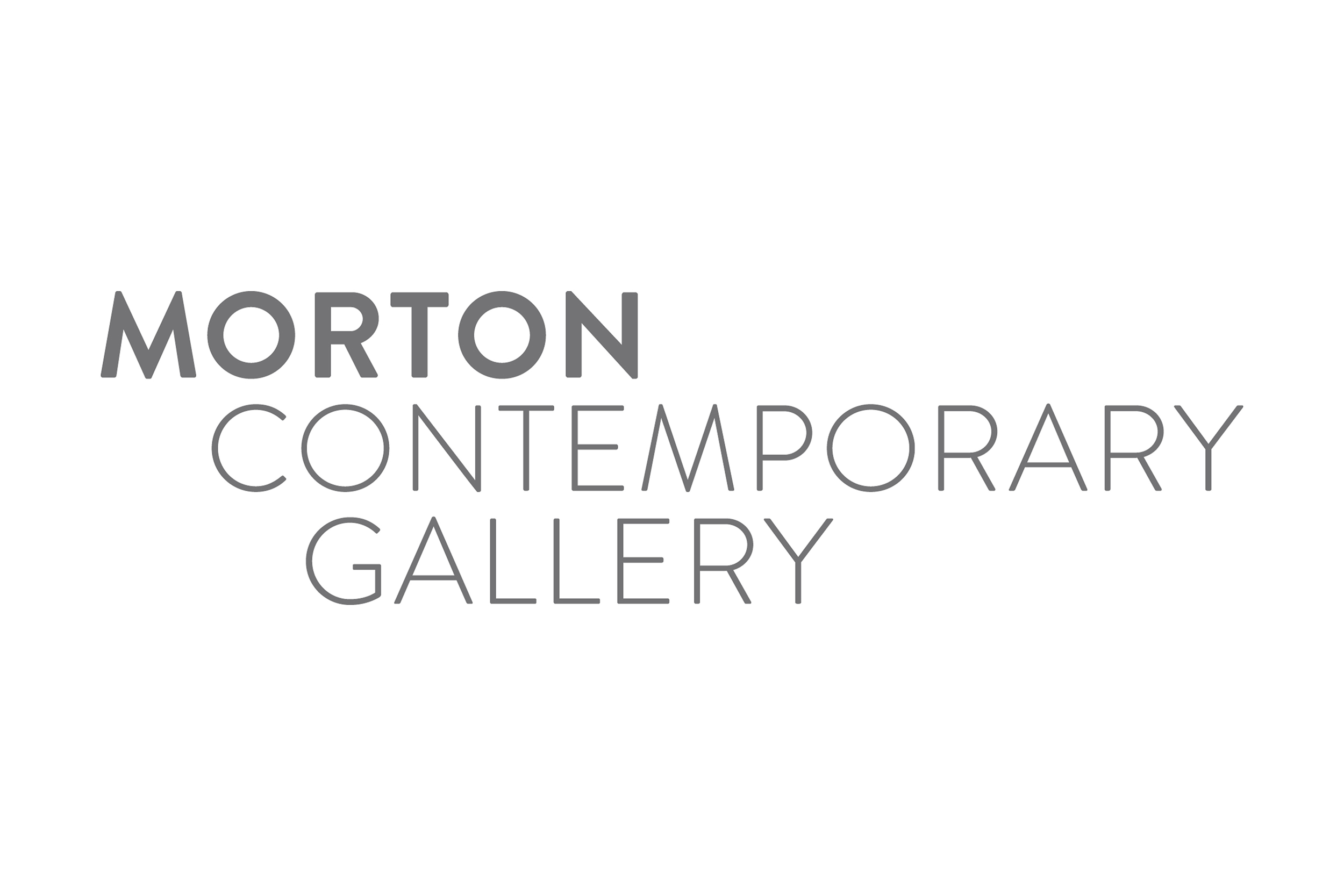
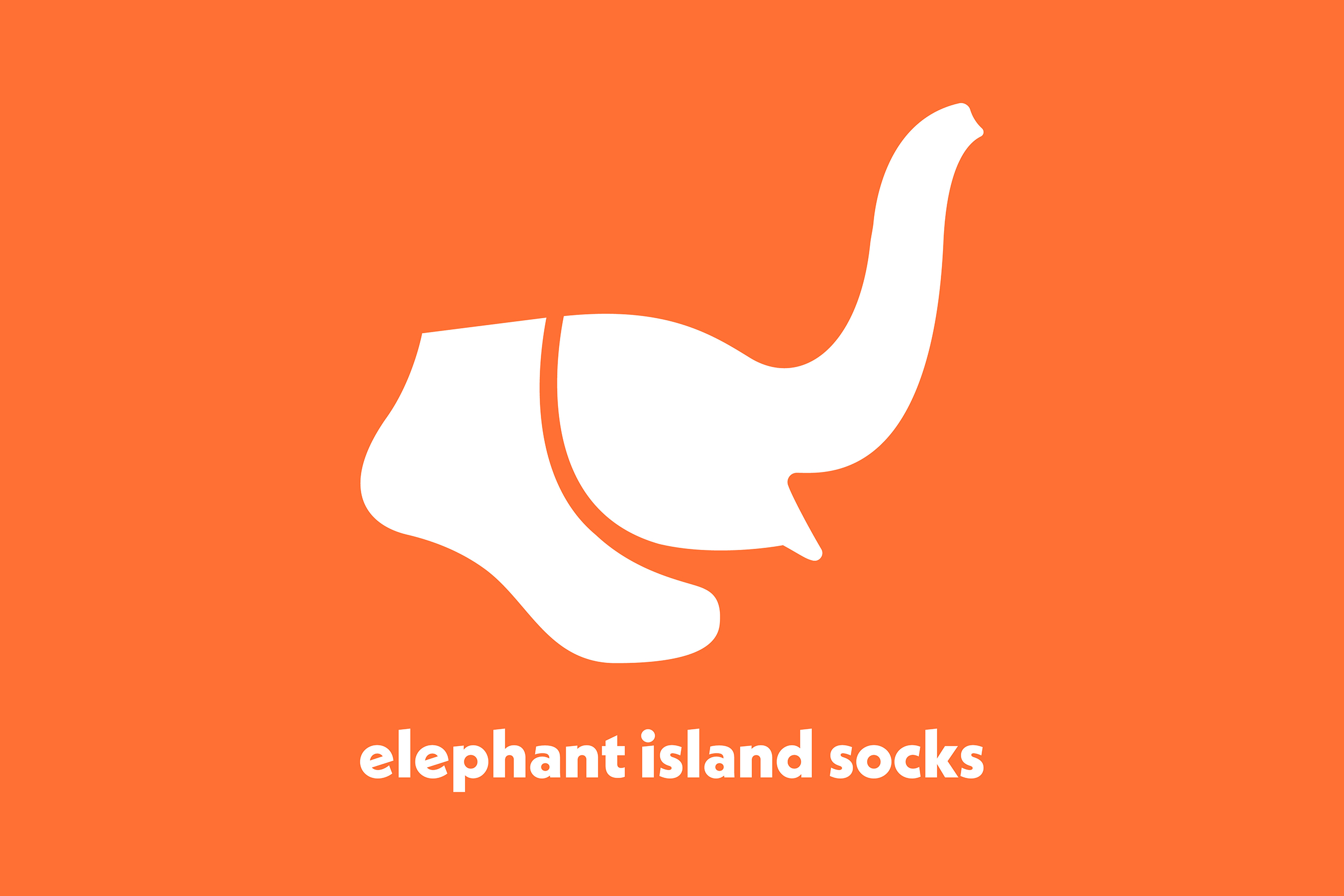
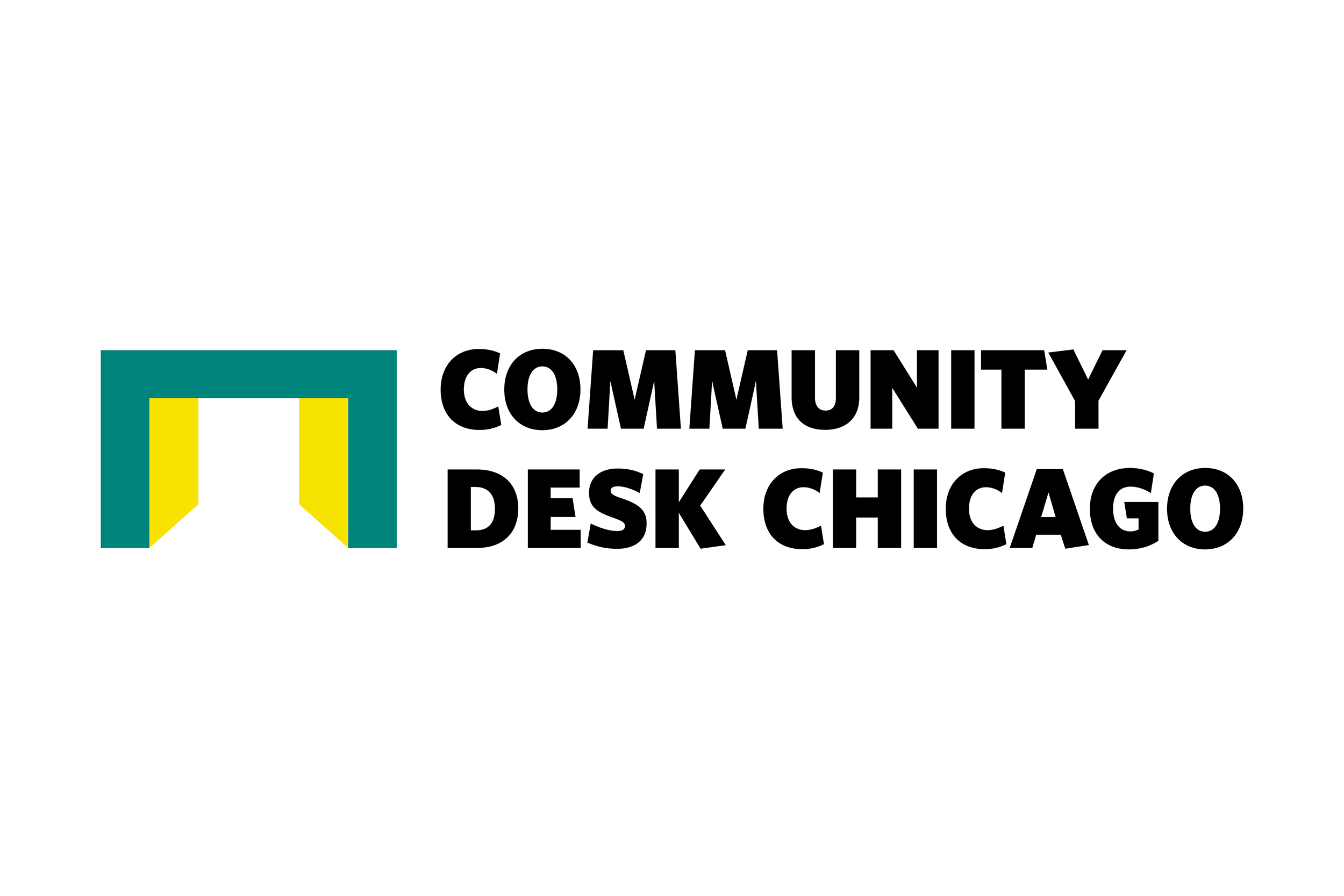

A Brutalist Campus
Project Info +−
This set of posters features six of Northwestern University's Brutalist buildings including the infamous “ugly” monolith, University Library (1970). In the past few years, many of these Brutalist buildings have been enveloped by new structures or demolished altogether.
The posters aim to encourage dialogue about these buildings and their status at Northwestern. They also allude to a broader question: What is the role of architecture and aesthetics on a university campus?
This project is the extension of an essay I wrote for Plates.
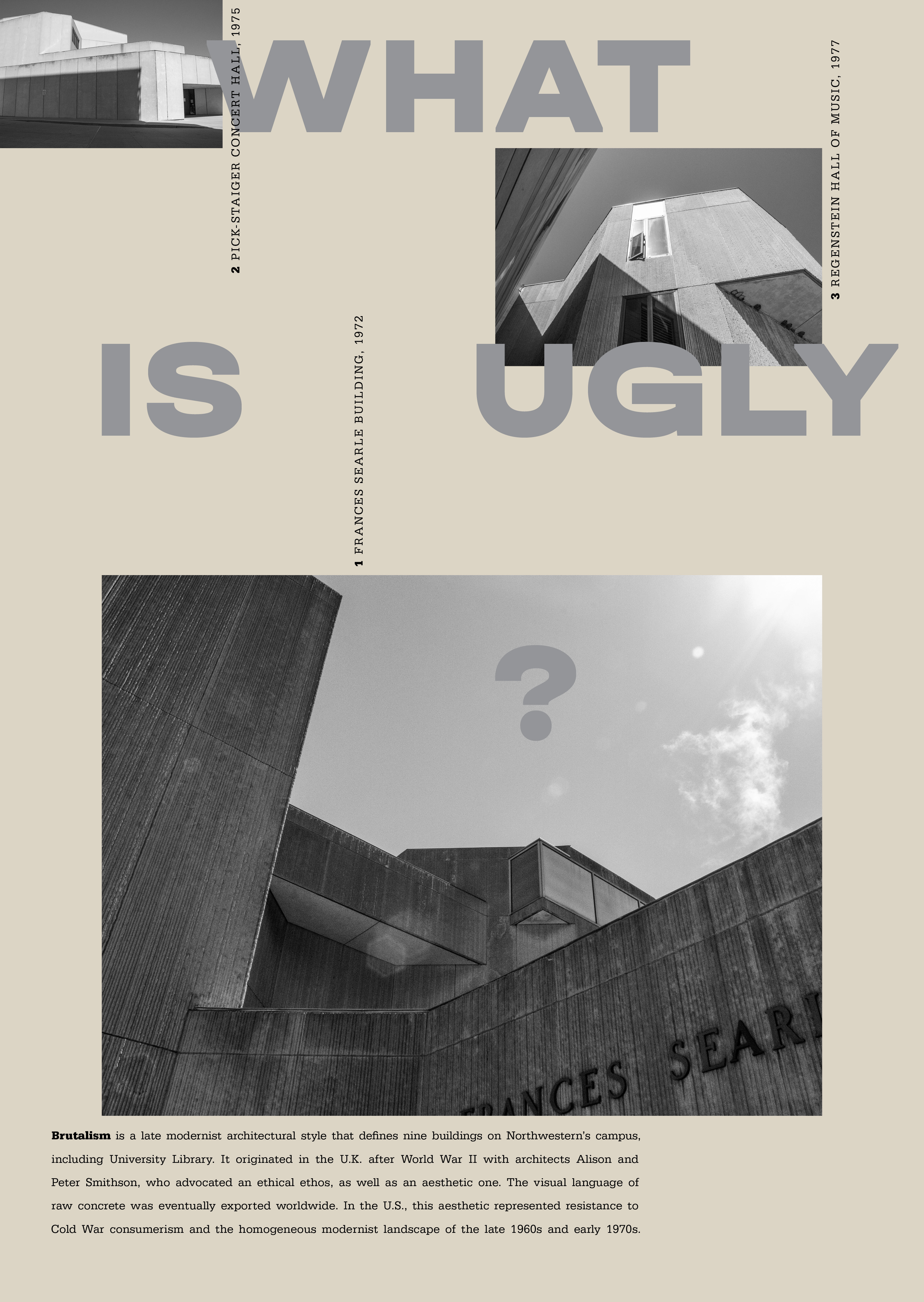
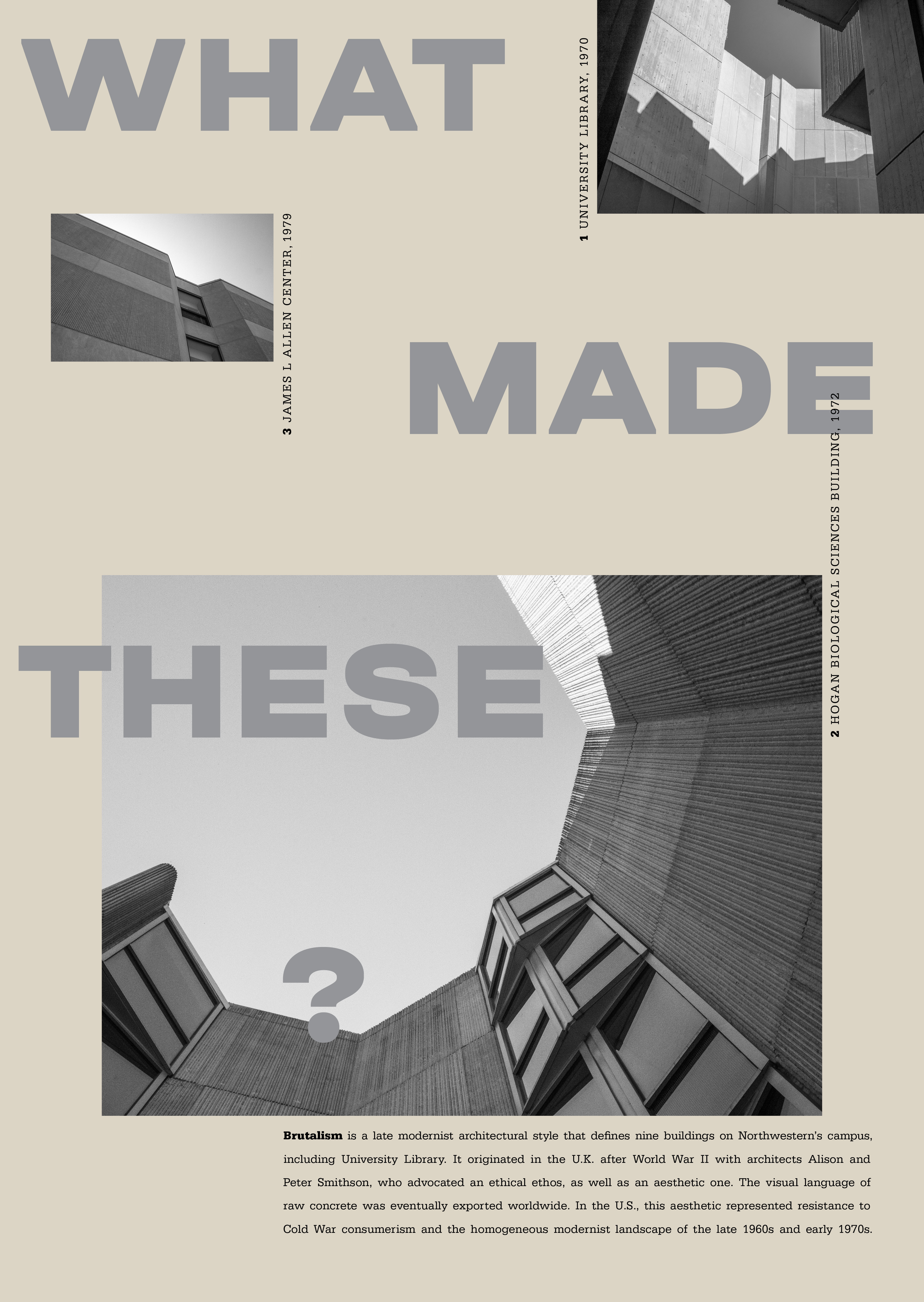
A Course Website: Design and Front-End Development
Project Info +−
In Fall 2020, I designed and developed a website for my Introduction to Visual Communication students at School of the Art Institute of Chicago. The site served as an anchor point where the class could access course materials.
Clear and intuitive organization were critical as COVID-19 produced uncertainty, especially for students attending their first semester of college. The homepage features a weekly schedule to keep students focused. Content is organized around the course's five units, each designed to cover a core principle in graphic design.
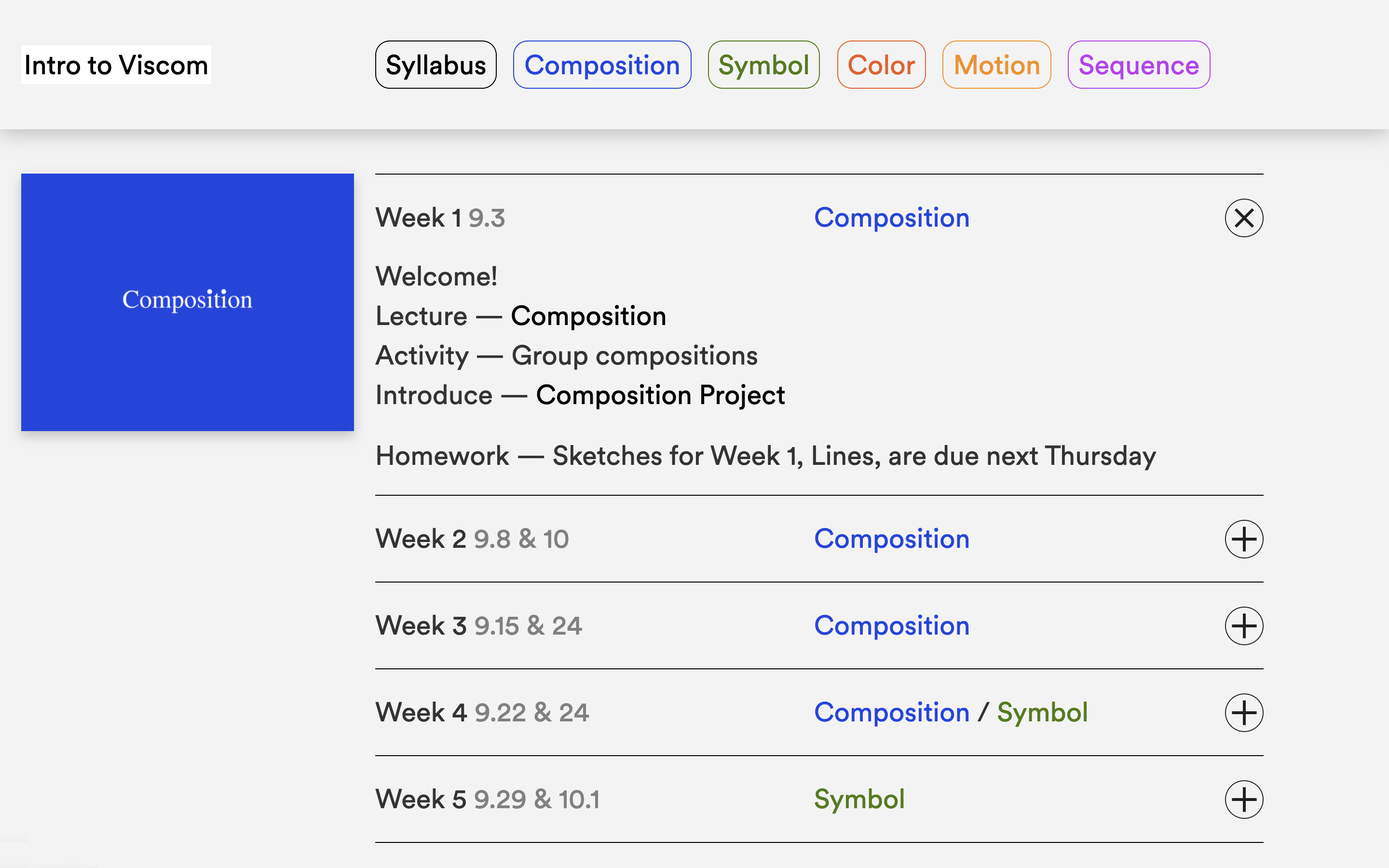


The Book of Holes
Project Info +−
After is a short story about grief.
It explores the new meaning physical objects assume after their owner dies. The book considers the act of burial: what it means to bury a person and also what it means to bury their former possessions, as the story's widowed protagonist does.
The book's primary visual motifs are holes cut through its pages, modeled after the shapes of holes I dug at Chicago's lakefront beaches. Holes layer atop one another to communicate the depth of grief.
The design also plays with weight. The book begins in thick, 140 lb. cardstock and ends in a 20 lb. newsprint to express the progression of grief from heavy to light.
